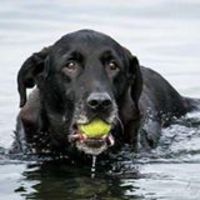Jay Davis
U.S. Fish & Wildlife Service, Environmental Contaminants, Department Member
Urban stormwater runoff is a globally significant threat to the ecological integrity of aquatic habitats. Green stormwater infrastructure methods such as bioretention are increasingly used to improve water quality by filtering chemical... more
Urban stormwater runoff is a globally significant threat to the ecological integrity of aquatic habitats. Green stormwater infrastructure methods such as bioretention are increasingly used to improve water quality by filtering chemical contaminants that may be harmful to fish and other species. Ubiquitous examples of toxics in runoff from highways and other impervious surfaces include polycyclic aromatic hydrocarbons (PAHs). Certain PAHs are known to cause functional and structural defects in developing fish hearts. Therefore, abnormal heart development in fish can be a sensitive measure of clean water technology effectiveness. Here we use the zebrafish experimental model to assess the effects of untreated runoff on the expression of genes that are classically responsive to contaminant exposures, as well as heart-related genes that may underpin the familiar cardiotoxicity phenotype. Further, we assess the effectiveness of soil bioretention for treating runoff, as measured by prevent...
Research Interests:
Coal tar sealcoats applied to asphalt surfaces in North America, east of the Continental Divide, are enriched in petroleum-derived compounds, including polycyclic aromatic hydrocarbons (PAHs). The release of PAHs and other chemicals from... more
Coal tar sealcoats applied to asphalt surfaces in North America, east of the Continental Divide, are enriched in petroleum-derived compounds, including polycyclic aromatic hydrocarbons (PAHs). The release of PAHs and other chemicals from sealcoat has the potential to contaminate nearby water bodies, reducing the resiliency of aquatic communities. Despite this, relatively little is known about the aquatic toxicology of sealcoat-derived contaminants. We assessed the impacts of stormwater runoff from sealcoated asphalt on juvenile coho salmon (Oncorhynchus kisutch) and embryo-larval zebrafish (Danio rerio). We furthermore evaluated the effectiveness of bioretention as a green stormwater method to remove PAHs and reduce lethal and sublethal toxicity in both species. We applied a coal tar sealcoat to conventional asphalt and collected runoff from simulated rainfall events up to 7 months post-application. Whereas sealcoat runoff was more acutely lethal to salmon, a spectrum of cardiovascu...
Research Interests:
Having previously documented the presence of chemical contaminants in fish feed (Maule et al. 2008),we investigated the bioaccumulation of those compounds in Pacific salmon (steelhead, coho and Chinook salmon) from three National Fish... more
Having previously documented the presence of chemical contaminants in fish feed (Maule et al. 2008),we investigated the bioaccumulation of those compounds in Pacific salmon (steelhead, coho and Chinook salmon) from three National Fish Hatcheries. We hypothesized that after ~18 months in the hatcheries, when these salmon were released to begin their seaward migration, lipophilic compounds that were sequestered in fat would be mobilized and re-deposited in vital organs. Similar re-distribution and resultant physiological dysfunction has been documented in fasting Arctic char (Jorgensen et al. 2006). In order to develop hypothesizes as to the impacts of these compounds, in each hatchery groups of fish were held-back—some were fasted and some fed. After 14 and 21 d, we examined hepatic gene expression using a directed, cDNA microarray representing several physiological systems. Results will be discussed relative to effects on survival during the salmon’s emigration.
Returning adult salmon and steelhead were sampled at three National Fish Hatcheries (NFHs); Warm Springs NFH (spring Chinook, Oncorhynchus tshawytscha), Quilcene NFH (coho, O. kisutch) and Quinault NFH (steelhead, O. mykiss). Whole... more
Returning adult salmon and steelhead were sampled at three National Fish Hatcheries (NFHs); Warm Springs NFH (spring Chinook, Oncorhynchus tshawytscha), Quilcene NFH (coho, O. kisutch) and Quinault NFH (steelhead, O. mykiss). Whole carcasses were taken at the Warm Springs NFH. Additionally, muscle samples were taken on spawning days at each hatchery from both male and female fish. Juvenile fish and feed were also collected throughout the rearing periods at each hatchery. The tissues collected included unfertilized eggs from the females sampled; swim-up fry before feeding began; parr before they were switched from starter to crumbled feed; and smolt carcasses. Samples were analyzed for congener specific polychlorinated biphenyls (PCBs), dioxins and furans, organochlorine pesticides, polybrominated diphenyl ethers (PBDEs) at the Geochemical and Environmental Research Group Laboratory and metals at the Alpha Woods Hole Laboratory. Levels of the contaminants were determined in the fish ...
